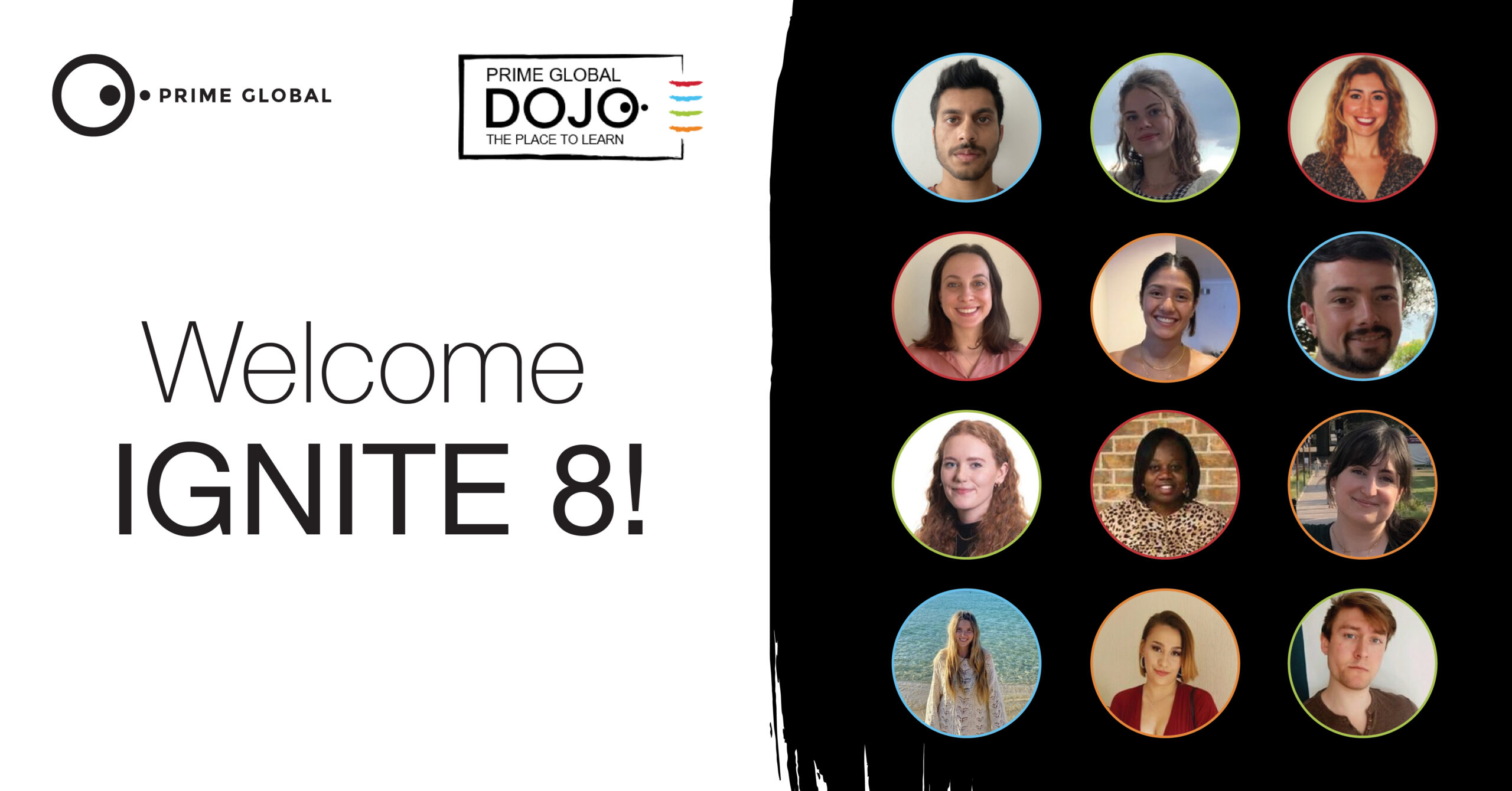In the spirit of Rare Disease Day, which was celebrated on 28 February, we’re looking at the importance of patient engagement in lysosomal storage disorders (LSDs).
LSDs are inherited metabolic diseases that are characterised by abnormal build-up of various toxic materials in the body’s cells as a result of enzyme deficiencies. There are around 50 types that affect different parts of the body (e.g., the brain, skeleton, skin, and heart), but more are continuously being found. There are currently limited approved treatments.
There are many types of LSD, but we will be focusing on those with which Prime Patient are most familiar: Batten Disease (CLN2); Fabry Disease; Gaucher Disease Types I, II and III; Pompe Disease; Mucopolysaccharide Storage Disease types (MPS), including Hunter Syndrome and Morquio Types A and B.
Why is patient advocacy and engagement particularly important in LSDs?
LSDs involve widespread physical problems for patients, often with life-limiting impact, and a key focus area is to improve physical outcomes. The use of Patient-Reported Outcome Measures (PROMs) is important to assess this, although generic PROMs are unlikely to fully capture condition-specific concerns. In addition, well-designed PROMs are hard to find in LSDs as in most rare diseases. By engaging with the LSD community, specific and relevant PROMs can be developed that are suitable for each condition – each of which has its own issues and manifestations.
There is evidence showing that an improved PROM in Pompe disease led to an improvement in patients’ physical outcomes (1), so what these patients were reporting in terms of coping actually translated to real improvements in their health.
Advocacy and engagement activities are also important in LSDs to identify challenges with existing treatments, and to identify potential new therapies which better meet patients’ needs, for example by pursuing cures (of which there are currently none for LSDs) rather than symptom management and progression delay.
By setting up processes to involve people living with an LSD in the drug development process, they can become active participants in therapeutic developments. Additionally, their observations can be used via PROMs to find the unmet needs and priorities in clinical research. (2) As the Fabry Support & Information Group says: “No matter the condition or therapy being studied, patients are the experts when it comes to their own health conditions. And this expert perspective is critical to advance therapies.” (3,4)
A successful example of this process was a 2019 study into the management of MPS VI, which included patient advocacy groups and patient advocates on their panels to ensure the patient input was seen. This led to the development of ‘consensus-based recommendations’ which focus on the holistic management of patients with the intention to improve clinical- and patient-reported outcomes and enhance patient quality of life. (5)
As with many rare diseases, general awareness of LSDs is low. Many PAGs focus on educating the community, the public, and medical professionals on what LSDs are and how to treat/support them. The LSD Patient Collaborative, for example, aims to undertake joint promotion and a shared understanding of LSDs, to advance standards of care and to enhance the health and wellbeing of those affected. (6)
Increasing awareness may lead to earlier diagnosis, which would allow doctors to treat symptoms before they progress (depending on the type of LSD). Many within the LSD patient community emphasise the potential positive ‘downstream’ implications of boosting early diagnosis and identification. Improving early diagnosis and developing educational guidelines around LSDs in at-risk groups helps to bridge the gap between treatment/management and diagnosis. This will improve outcomes for patients and their families – mostly achieved through better education around the disease.
How is pharma currently engaging with LSD patients?
The global LSD therapeutics market is anticipated to be valued at US$ 14.636 bn by 2026. This is the result of increasing research by pharma and orphan drug development following introduction of financial incentives, fast market access, and premium pricing. (7) This should be seen as good news for patients, as existing treatments like enzyme replacement therapy (ERT) do not offer full symptom relief and are a lifelong burden for those receiving them. New therapies being developed, such as gene therapies, may offer more tolerable alternatives. (8)
A few companies, such as Pfizer and BioMarin, have created internal infrastructure to develop and build relationships with rare disease patient communities. (9, 10) These advocacy programmes aim to involve patients at every stage of a product’s lifecycle and to develop interventions that work for those patients, defining value, benefit and access to therapies.
Specific patient communities have been set up by some companies, such as Sanofi’s Women with Fabry, BioMarin’s MorQuiosity and CLN2Family, or Takeda’s HunterPatients.com among others.
Pharma is often leading on developing specific PROMs for people with LSDs. Sanofi, for example, have developed a Fabry Disease PRO (FD-PRO) that has 19 items that relate to specific issues faced by people with Fabry Disease. (11) GD1-PROMs were designed by Takeda/Shire, for people with Gaucher’s Type 1, to take into account the multi-factorial and progressive issues faced by those patients. (12)
What are the challenges? How can we address them?
The main challenge associated with patient advocacy and engagement in LSDs is largely the same as in most rare diseases, namely that small patient populations mean a smaller pool of people to engage with, the number of available treatments is low, and levels of awareness are low amongst healthcare professionals (HCPs).
For a robust study, a pharma company needs a good number of people from a variety of backgrounds to ensure proper representation and avoid overgeneralising. This is a hard thing to find in the rare disease space. There are some solutions, however. The creation of patient registries helps to facilitate translational and epidemiological research by setting up and maintaining comprehensive clinical databases in partnership with disease-specific research groups. We’re seeing these being developed across LSDs.
In an attempt to broaden the number of available treatments, the EveryLife Foundation for Rare Diseases has developed the OPEN ACT (Orphan Product Extensions Now Accelerating Cures & Treatments), which is modelled after the Best Pharmaceuticals for Children Act (BPCA). (13) Similarly to how the BPCA incentivises companies to add paediatric indications to existing drugs by offering extended market exclusivity in return, the OPEN ACT aims to help repurpose existing drugs for rare disease patients by allowing companies to attach 6 months of market exclusivity to existing treatments if a rare disease indication is added. This is an effective way of increasing access to drugs for rare disease populations, as companies are usually reluctant to pursue rare indications since the financial benefits (small population) are not considered to outweigh the risks (e.g., fear that potential adverse effects in clinical trials on very sick patients would risk the product’s market). The BPCA has been a great success to date – increasing the number of paediatric indications and lowering the ‘off–label’ use of drugs in the paediatric populations by 20% – and it is hoped the OPEN ACT will result in similar improvements. (13) Thus, the OPEN ACT may provide a solution for people living with LSDs, should there be evidence of potential therapies which could benefit from being repurposed for LSD indications.
There are a few programmes already in place to educate HCPs. For example, Global Genes have set up a ‘Compassion Programme’ with the help of multiple pharma companies to educate medical professionals about the struggles of LSDs and to create future medical advocates. (14) Activities by more general rare disease organisations such as Everylife Foundation, who put on monthly rare disease webinars, and RareAction Network, a US platform to connect people and raise awareness via storytelling, may provide interesting models that could be translated more specifically in LSDs.
What’s next for patient engagement in LSDs?
But what else needs to happen in LSD patient engagement? These would be a good place to start:
- Creating more disease-specific PROs and PROMs for each LSD to truly understand the effect of the treatment on the patient and generate more robust data that is in line with evolving expectations from regulators
- Creating a centralised registry of people with each LSD that can be drawn on for trials, drug treatments, and expertise/advice
- Continuing to survey the opinions and feelings of patients and their parents/caregivers before embarking on trials. Workshops and advisory boards with patients and caregivers are essential to find out what they need developing and how we can help them.
- Listening to and trialling patient suggestions, such as the use of homebased care to improve quality of life (which has the added benefit of increasing efficiency / saving costs for pharma companies)
- Continuing to engage with PAGs and helping to support advocacy/patient expert programmes
LSDs are an area of rare disease where we can see many examples of good engagement and, in particular, a strong patient advocacy landscape across most types. Challenges exist, however, as with all rare diseases. It is vital for Pharma to continue working closely with PAGs and the wider patient community, to educate HCPs, provide platforms to bring disease communities together, and involve patients and their families in research. Many unmet needs remain among those living with LSDs, but with collaboration between industry and patient groups / patients and their families, we can work towards a better quality of life for all – no matter how rare someone’s diagnosis may happen to be.
For more information on how we deliver a triple win for patients, Pharma, and society, get in touch with the Prime Patient team via PatientEngagement@primeglobalpeople.com
Suggested blog post: Amplifying the Patient Voice in Rare Diseases
References:
- Yuan M, Andrinopoulou ER, Kruijshaar ME, Lika A, Harlaar L, van der Ploeg AT, Rizopoulos D, van der Beek. Positive association between physical outcomes and patient-reported outcomes in late-onset Pompe disease: a cross sectional study. Orphanet J Rare Dis. 2020 Sep 3;15(1):232.
- Molnár JM, Molnár V, László I, Szegedi M, Várhegyi V, Grosz Z. A betegek által riportált kimeneti mutatók jelentősége Pompe-kórban [The importance of patient reported outcome measures in Pompe disease]. Ideggyogy Sz. 2021 Mar 30;74(3-4):105-115.
- Fabry Support & Information Group. Biopharmaceutical Research and Patient Perspective: From Discovery to the Marketplace. 2021.
- Fabry Support & Information Group. Patient-Focused Drug Development: Learning from Patients to Develop Better Treatments. 2021.
- Akyol, M.U., Alden, T.D., Amartino, H. et al. Recommendations for the management of MPS VI: systematic evidence- and consensus-based guidance. Orphanet J Rare Dis 14, 118 (2019).
- LSD Collaborative. [Accessed online 23/02/2022 https://www.lsdcollaborative.org.uk/]
- Persistence Market Research. Lysosomal Storage Diseases Market: Lysosomal Storage Diseases Market Segmented By Gaucher’s Diseases, Fabry Diseases, Pompe’s Syndrome, Mucopolysaccharidosis Indication Enzyme Replacement Therapy, Stem Cell Therapy, Substrate Reduction Therapy Therapies. 2016.
- Freeline. Lysosomal Storage Disorders. [Access online 23/02/2022 https://www.freeline.life/patients-families/lysosomal-storage-disorders/]
- Pfizer. Succeeding Together Through Rare Disease Advocacy and Support. [Accessed online 23/02/2022 https://www.pfizer.com/science/focus-areas/rare-disease/advocacy]
- BioMarin. Patient Advocacy. [Accessed online 23/02/2022 https://www.biomarin.com/our-motivation/patient-and-community-support/patient-advocacy]
- Hamed A, DasMahapatra P, Lyn N, Gwaltney C, Hopkin RJ. Development of the Fabry Disease Patient-Reported Outcome (FD-PRO): a new instrument to measure the symptoms and impacts of Fabry Disease. Orphanet J Rare Dis. 2021 Jun 25;16(1):285
- Elstein, D., Belmatoug, N., Deegan, P. et al. Development and validation of Gaucher disease type 1 (GD1)-specific patient-reported outcome measures (PROMs) for clinical monitoring and for clinical trials. Orphanet J Rare Dis 17, 9 (2022).
- EveryLife Foundation. OPEN ACT Featured in Rare Disease Report. 2014. [Accessed online 23/02/2022 https://everylifefoundation.org/open-act-featured-in-rare-disease-report/]
- Global Genes. RARE Compassion Program. [Accessed online 23/02/2022 https://globalgenes.org/compassion/]




